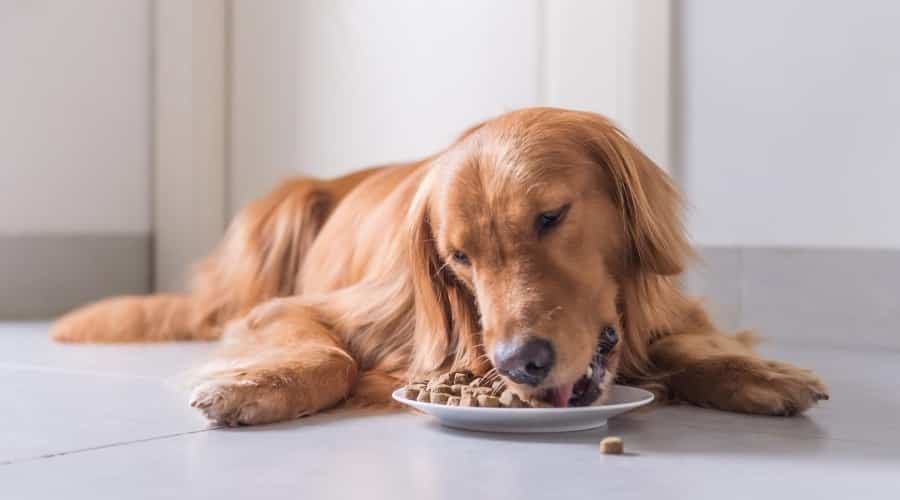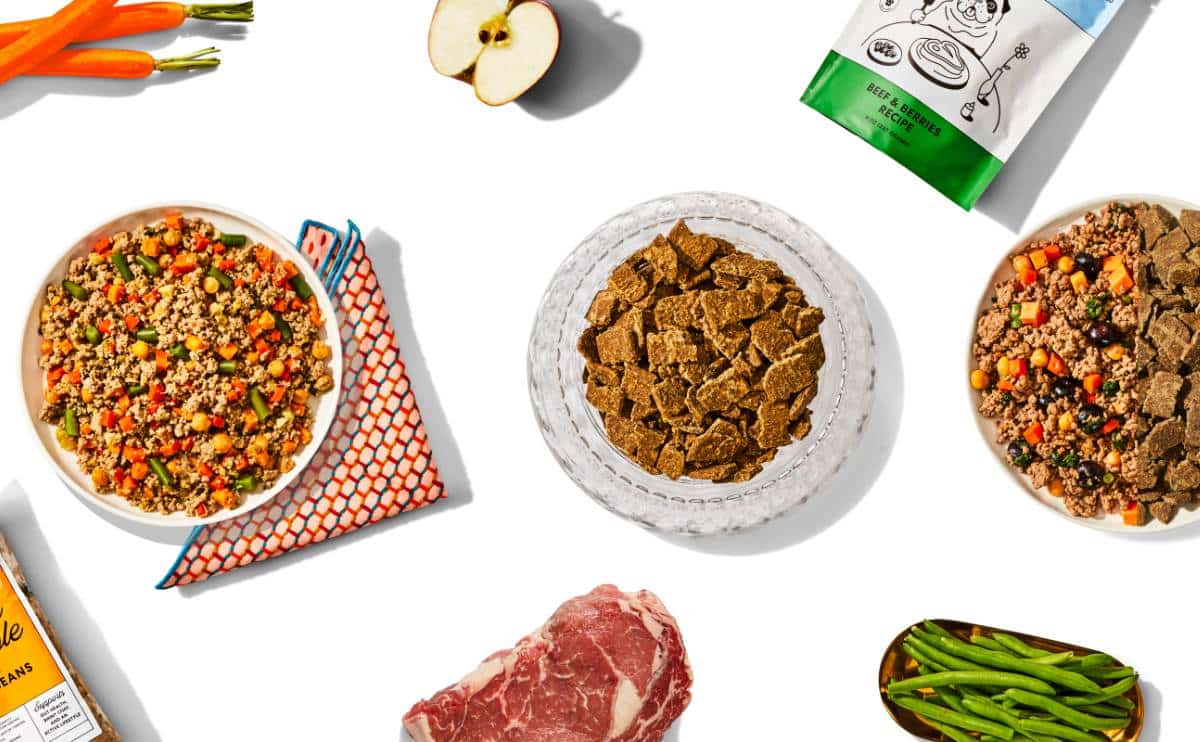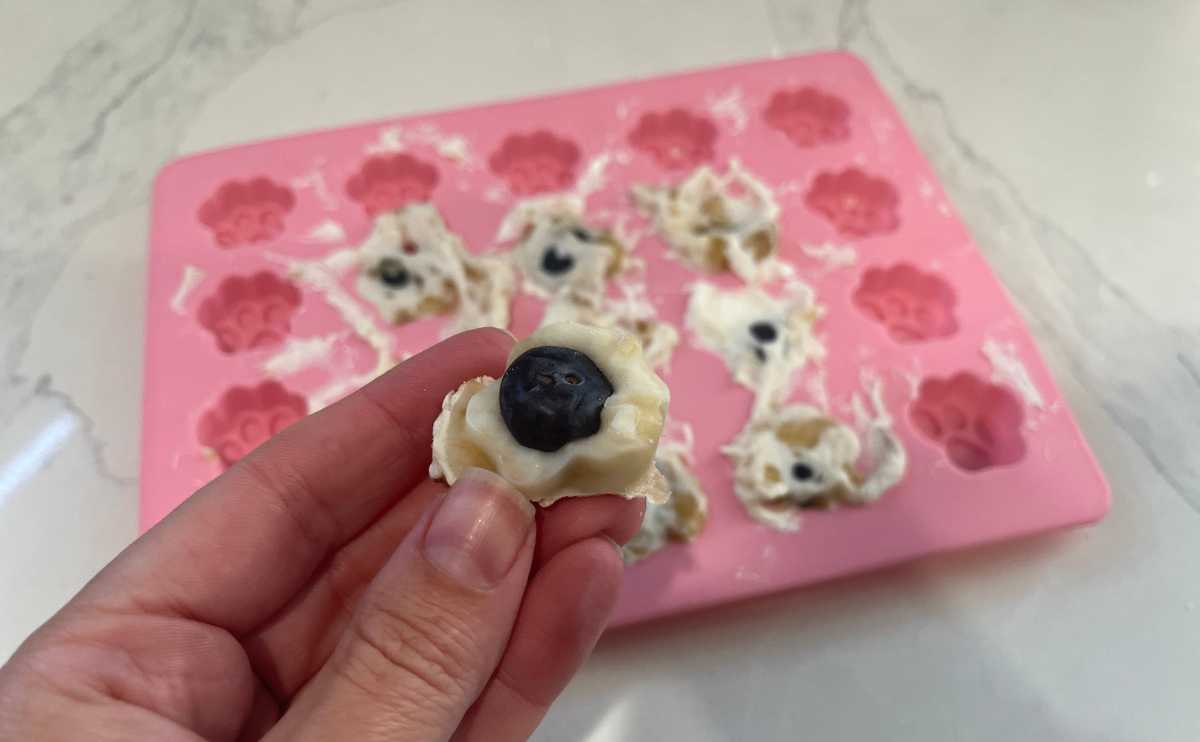Boost Your Dog’s Health With These 8 Homemade Meals
When you purchase through links on our site, we may earn a commission. Here’s how it works.
Have you ever wondered what would happen if you fed your dog real food? Like, the kind with actual ingredients you can pronounce? These homemade dog food recipes are balanced, vet-backed, and easier to make than you think.
Table of Contents
Is Homemade Dog Food Actually Better For Your Pup?
Forget the mystery meat. More dog parents are ditching store-bought kibble in favor of real, homemade meals, and it’s not just for spoiled pups with picky palates.

A Longer Life Starts With The Right Food
Studies are now confirming what many dog owners have intuitively known for years: fresh, homemade diets can be excellent for long-term health.
In a 2024 prospective study of 167 dogs, those that stayed on a customized, home-cooked diet showed dramatic health improvements.
Among dogs with gastrointestinal disorders, 95% saw symptom relief, and 83% of dogs with skin conditions improved. Even among healthy dogs, 70% had better coat condition, and 47% had improved digestion.
Some of the longest-living dogs ever recorded shared one surprising trait: they didn’t eat kibble.
- Bramble, a Border Collie, lived to age 25 on a plant-based diet of rice, lentils, and vegetables.
- Chilla, reportedly 32 years old at her death, ate homemade leftovers like cabbage ends, potato peels, and bone broth.
- Spike, a verified record-holder today, gets home-cooked dinners like braunschweiger with cheese. (And also the occasional snack of Doritos)
These aren’t just one-off stories. Diet plays a significant role in longevity.
Top 4 Benefits Of Homemade Dog Food
Homemade dog food isn’t just about skipping the store. It can improve your dog’s health from the inside out.
The benefits go beyond what’s listed on a kibble bag, from fewer stomach issues to shinier coats.
1. You Know Exactly What’s In It
Ingredient labels on commercial dog food can be vague or misleading. Terms like “animal by-product” or “natural flavoring” do not give you much clarity. Homemade food removes the guesswork.
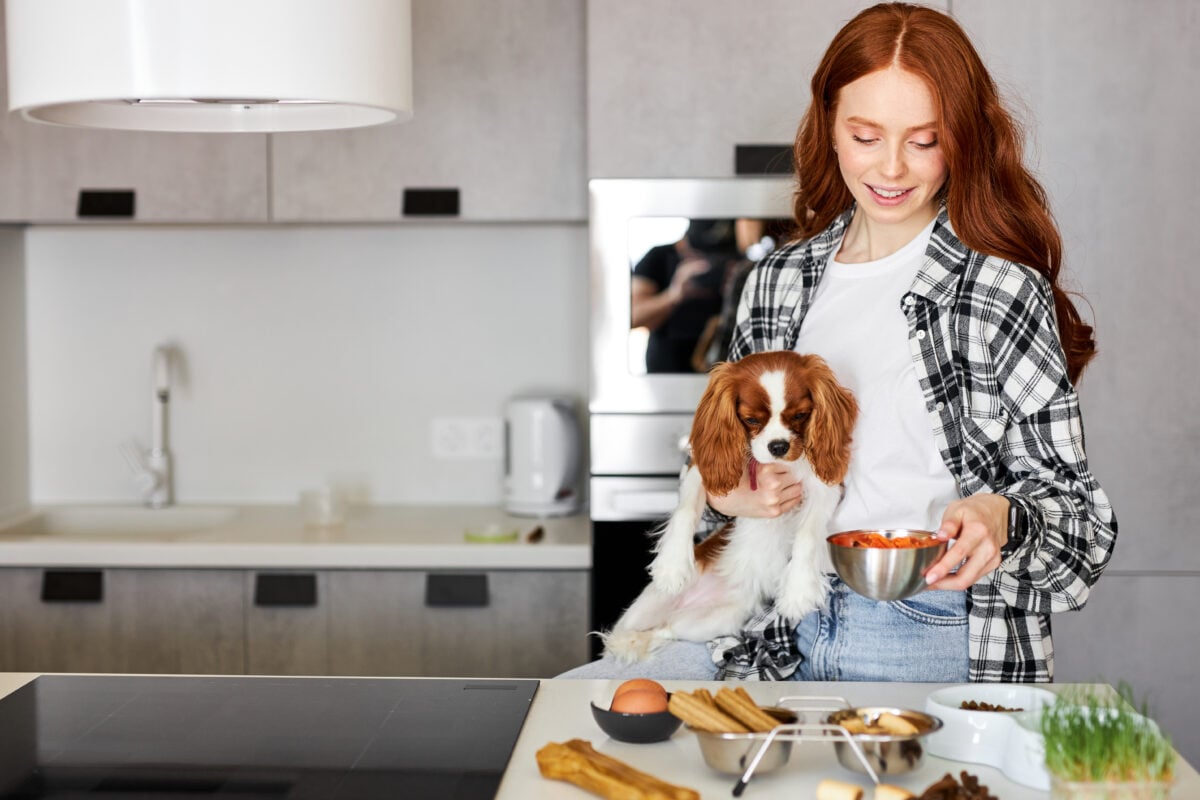
You control every component when you make your dog’s meals at home. You can choose high-quality proteins, whole grains, and fresh vegetables. That means no hidden fillers, no chemical preservatives, and no surprises.
You also avoid silent recipe changes, which are common in commercial brands. These changes can trigger allergic reactions before pet owners even notice. With homemade food, your dog’s diet stays consistent and transparent.
2. Easier On Dogs With Sensitivities
If your dog struggles with food allergies, skin flare-ups, or digestive issues, diet is often the root cause. Many commercial foods contain common allergens like chicken, wheat, corn, or dairy, sometimes without clearly labeling them.

Homemade meals allow you to build a limited-ingredient diet from scratch. You can avoid known triggers and introduce new ingredients slowly. This makes it easier to figure out precisely what your dog can and cannot tolerate.
Dogs with chronic sensitivities often see significant improvements on a homemade diet. That can mean less itching, firmer stools, fewer emergency vet visits, and a more comfortable life overall.
3. No Artificial Preservatives Or Fillers
Many commercial dog foods are made for long shelf lives.
To achieve that, manufacturers add synthetic preservatives, artificial colors, and chemical flavor enhancers. These ingredients may help food stay fresh—but they come with risks.
BHA, BHT, and Ethoxyquin are common preservatives found in pet food. Although the FDA considers BHA and BHT “generally recognized as safe,” studies have linked them to cancer in animals. The Center for Science in the Public Interest recommends avoiding BHA and using caution with BHT.
Ethoxyquin is banned in human food but still allowed in pet food despite evidence of harmful effects on both animals and humans.
Artificial food dyes also raise concerns. For example, caramel coloring contains 4-methylimidazole (4-MEI), a compound linked to cancer in animal studies. It’s used purely for appearance—not nutrition.
Even rendered fats and unnamed meat or bone meals can be risky.
These ingredients are often by-products of the rendering industry, which collects animal remains from various sources. That includes roadkill, grocery store waste, and even the remains of animals that were dead, dying, diseased, or disabled before processing.
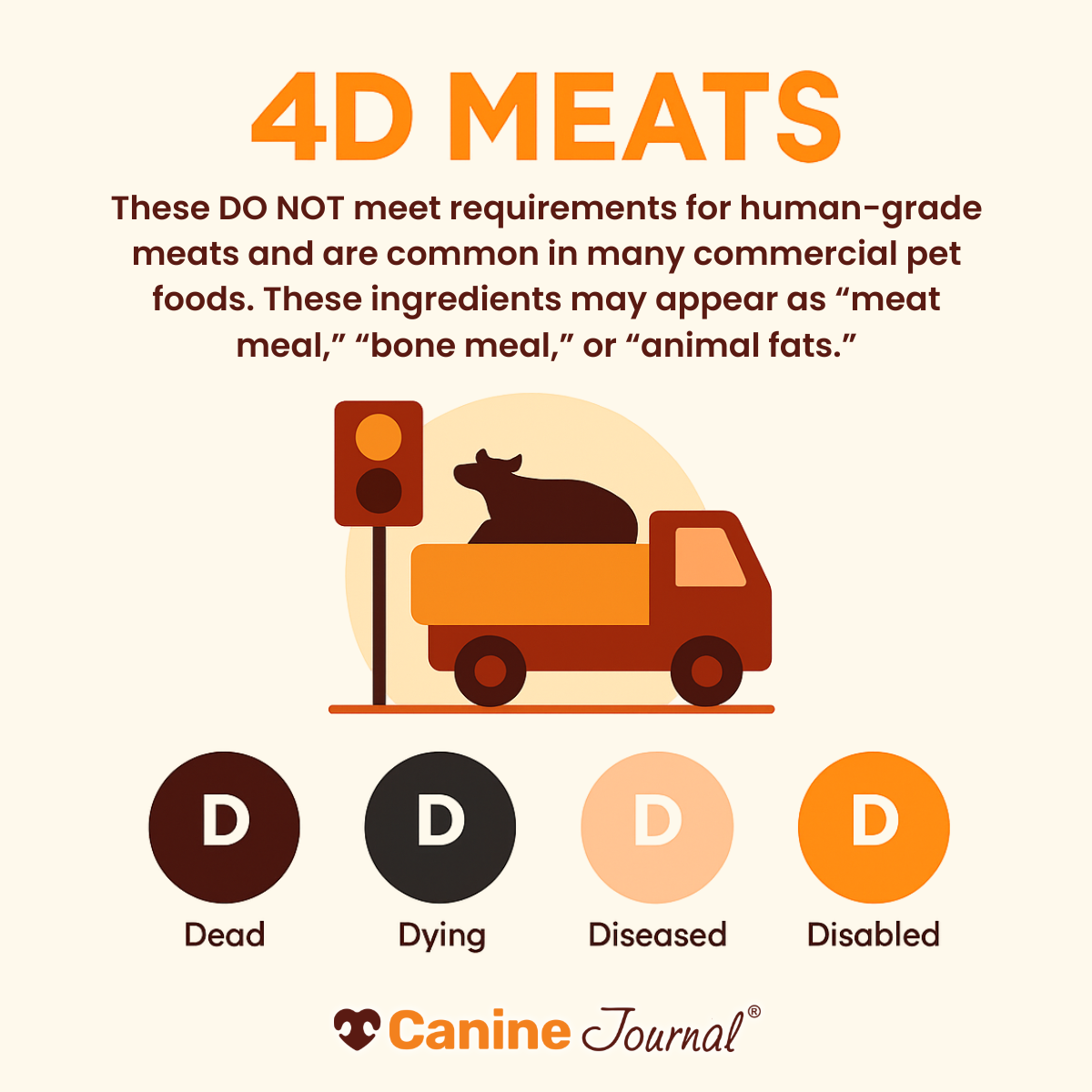
These are known as “4D meats,” and while they are banned from entering the human food supply, they are still allowed in many commercial pet foods. Because the sources are not always disclosed, pet owners can’t know exactly what their dog is eating.
The rendering process involves cooking animal remains at high temperatures to separate fat from protein. But this does not always destroy harmful bacteria, drug residues, or euthanasia chemicals like pentobarbital—traces of which have been found in some pet food recalls.
When you make food at home, you skip these risks. No chemical preservatives, vague meat sources, or questionable additives. Just real, whole-food ingredients your dog can thrive on.
Avoiding artificial additives can help reduce your dog’s risk of inflammation, behavior changes, and even some cancers. Many owners also find that their dogs smell better and shed less on a cleaner diet.
4. Higher Nutritional Value
Most commercial dog food is cooked at high temperatures to kill bacteria and preserve the product. But this high heat destroys some natural nutrients, including B vitamins, antioxidants, and healthy fats.
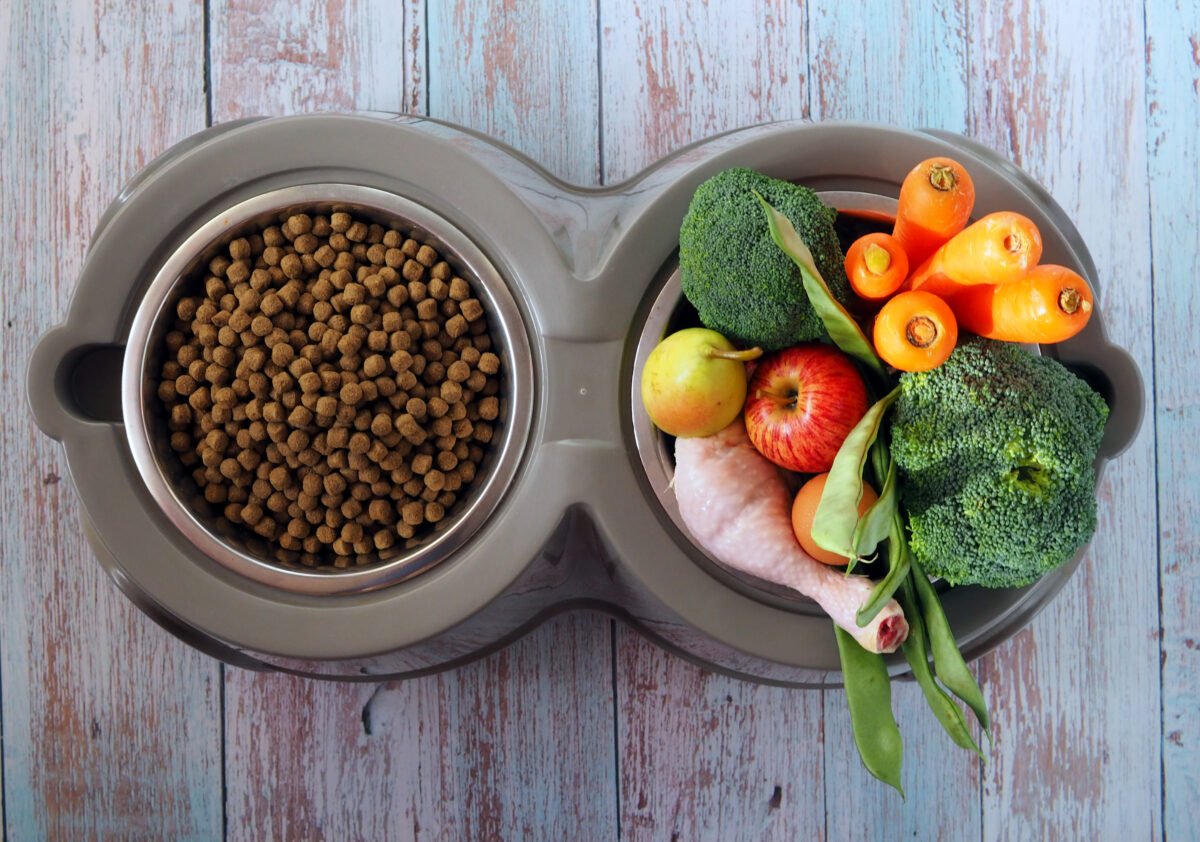
Home cooking uses gentler methods like boiling, baking, or steaming. These help preserve more of the original nutrients in the food. Your dog gets vitamins and minerals in their most natural and digestible form.
Some synthetic nutrients are well absorbed by dogs, but not all. For example, natural vitamin E is more bioavailable than the synthetic version.
On the other hand, synthetic folic acid is better absorbed than the folate found in food. It depends on the nutrient and how it’s processed.
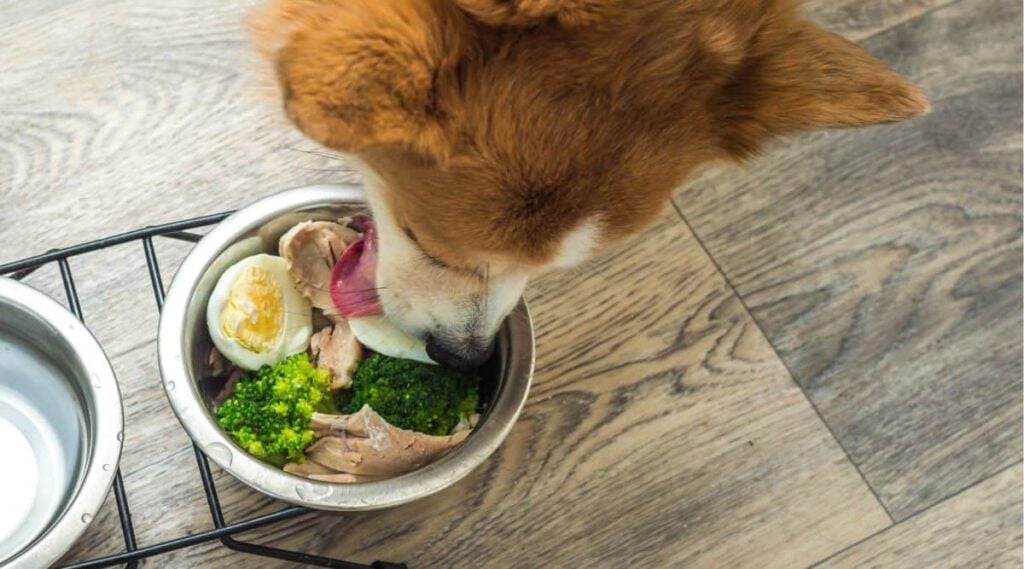
Whole foods also contain enzymes, fiber, and antioxidants that may help with absorption and reduce side effects. Homemade meals give your dog these nutrients in their original form, with fewer additives and less breakdown from high heat.
While commercial food uses synthetic vitamins to meet AAFCO standards, fresh ingredients may provide better nutrient synergy. That means your dog may actually get more out of the food you make at home.
A nutrient-rich diet supports stronger immunity, better skin and coat health, and more consistent energy levels. That makes a big difference for puppies, seniors, and dogs recovering from illness.
8 Vet-Approved Homemade Dog Food Recipes
Homemade meals can be healthy, but only if they’re balanced. That’s why our veterinary consultant has reviewed each recipe in this section to ensure it meets your dog’s nutritional needs.
Whether you cook full-time or need a backup plan when kibble runs low, these recipes offer trusted ingredients and vet-approved peace of mind.
Note: The homemade dog food recipes below do not include serving size because portion sizes will vary depending on breed, weight, activity level, age, and your dog’s health. A recommendation is to feed your dog a comparable amount of ounces/cups to what you would usually feed in kibble, but check with your vet to be certain.
Turkey, Rice & Veggie Mix
A lean, low-fat recipe ideal for dogs who need to shed a few pounds or maintain a healthy weight. Balanced with protein, fiber, and complex carbs, this is a go-to meal for everyday feeding.

Ingredients (Makes ~10 Cups)
- 6 cups water
- 1 pound ground turkey
- 2 cups uncooked brown rice
- 1 teaspoon dried rosemary
- 8 ounces frozen broccoli, carrots, and cauliflower mix (½ of a 16 oz bag)
Instructions
- In a large Dutch oven, combine water, ground turkey, brown rice, and rosemary.
- Stir until the turkey is broken up and evenly distributed.
- Bring to a boil over high heat.
- Reduce heat to low and simmer for 20 minutes.
- Stir in the frozen vegetables and cook for 5 more minutes.
- Remove from heat and let cool completely before serving.
- Store in an airtight container in the refrigerator for up to 5 days.
Nutrition Facts (Per 1 Cup Serving)
- Calories: 220
- Protein: 11.5 g
- Fat: 5 g
- Carbs: 32 g
- Fiber: 2.5 g
- Key Nutrients: Iron, Potassium
Recipe from: Allrecipes
Easy Slow Cooker Beef & Rice Meal
Hearty, high-protein, and slow-cooked to perfection. This beef-based recipe is great for active dogs who need extra fuel or pet parents who love a one-pot solution.

Ingredients (Makes ~12 Cups)
- 2½ pounds ground beef
- 1½ cups brown rice
- 1 (15-ounce) can kidney beans, drained and rinsed
- 1½ cups chopped butternut squash
- 1½ cups chopped carrots
- ½ cup peas (frozen or canned)
- 4 cups water
Instructions
- Add all ingredients to your slow cooker.
- Stir to combine and cover.
- Cook on low for 5–6 hours or on high for 2–3 hours.
- Stir occasionally as it cooks.
- Let cool to room temperature before serving.
- Store leftovers in the fridge for up to 5 days or freeze in portioned containers.
Nutrition Facts (Per 1 Cup Serving)
- Calories: 400
- Protein: 39.1 g
- Fat: 7 g
- Carbs: 44.2 g
- Key Nutrients: Iron, Potassium, Calcium
Recipe from: Damn Delicious
Beef Stew For Dogs
This hearty homemade stew is rich in iron, full of fiber, and packed with dog-safe veggies and antioxidant-rich blueberries. A great batch-cook recipe you can refrigerate or freeze.

Ingredients (Makes ~10–12 Cups)
- 2½ cups water
- 2 to 2½ pounds sirloin, chuck roast, or ground beef
- 1 cup white or light brown rice
- ¼ cup rolled oats
- 2 cups sweet potatoes, peeled and chopped
- 2 cups green beans
- 2 cups blueberries
- 1 cup green peas
Instructions
- In a large pot, combine all ingredients except the oats.
- Bring to a low boil over medium-high heat.
- Reduce heat to low, cover with a tight-fitting lid, and simmer for 25 minutes. Stir occasionally.
- Stir in the oats and continue cooking for another 20 to 30 minutes, until the meat is tender and a light gravy forms.
- Cool to room temperature before serving.
- Store in the fridge for up to 5 days, or freeze in portions for later use.
Nutrition Facts (Estimated, Per 1 Cup Serving)
- Calories: ~350–400
- Protein: ~28–32 g
- Fat: ~10–14 g
- Carbs: ~30–35 g
- Key Nutrients: Iron, Vitamin A, Antioxidants (from blueberries), Fiber
Recipe from: Pebbles & Toast
CBD-Infused Calming Dog Treats
These calming treats combine peanut butter, pumpkin, and a vet-cleared dose of CBD to help dogs unwind. Great for stormy nights, stressful car rides, or just a moment of calm—always consult your vet first.

A Quick Note About CBD For Dogs
Before giving your dog CBD in any form, talk to your vet, especially if your pup is on medications or has a chronic condition. Check your CBD brand’s dosing guide carefully, and never substitute pet-safe CBD with human products that may contain unsafe additives like xylitol.
To learn more, read our article on the full benefits of CBD for dogs.
Ingredients (Makes ~24 Treats)
- 2½ cups gluten-free flour
- ½ cup oats
- 1 cup pumpkin purée (not pie filling)
- 1 tbsp coconut sugar
- 1 apple, cored and grated
- ½ cup carrots, peeled and grated
- ½ cup peanut butter (xylitol-free)
- 1 egg, beaten
- ⅓ cup olive oil or coconut oil
- ½ cup water
- Dash of sea salt
- 120 mg pet-safe CBD oil
Instructions
- Preheat oven to 350°F. Grease a dog treat pan or baking sheet with coconut oil.
- In one bowl, mix flour, oats, coconut sugar, and sea salt.
- In a separate bowl, beat the egg, then stir in oil, water, grated apple and carrot, pumpkin, and peanut butter.
- Combine wet and dry ingredients. Mix thoroughly.
- Stir in CBD oil last to preserve potency.
- Use a tablespoon to portion dough into the pan. Press down to flatten.
- Bake for 32 to 37 minutes, or until golden and firm.
- Cool completely. Store in an airtight container.
Notes On CBD Dosage
This batch uses 120 mg CBD across 24 treats, or 5 mg per treat. Adjust the CBD dosage based on your dog and the guidance on your product. Some dogs need as little as 1–2 mg per 10 pounds of body weight.
Recipe from: Truth Theory
Pumpkin Dog Biscuits
These crunchy treats are perfect for dogs with sensitive stomachs. Pumpkin supports digestion, and each biscuit is packed with gentle, dog-safe ingredients for a feel-good snack your pup will love.

Ingredients (Makes ~24 Biscuits)
- 1 can pumpkin purée (not pie filling)
- 2 eggs
- ½ cup oats (optional—omit or replace with ¼ cup grain-free flour for grain-free pups)
- 3 cups whole wheat, brown rice, or gluten-free flour
- 3 tbsp peanut butter (xylitol-free)
- ½ tsp cinnamon (optional)

Instructions
- Preheat oven to 350°F.
- Combine flour, oats (if using), and cinnamon in a small bowl.
- In a large bowl, whisk together eggs, pumpkin, and peanut butter until smooth.
- Stir wet and dry ingredients together, or use a food processor to mix.
- Dust a clean surface with flour and roll out dough to ½-inch thickness.
- Use a cookie cutter to shape the biscuits.
- Place on a baking sheet and bake for 30 to 35 minutes, until golden brown.
- Transfer to a wire rack and cool completely. Treats will harden as they cool.
Nutrition Facts (Per 1 Biscuit)
- Calories: 27
- Protein: 1.3 g
- Fat: 1.5 g
- Carbs: 2.8 g
- Key Nutrients: Vitamin D, Iron

Tip: These make a great daily snack for dogs with mild digestive issues. Store in an airtight container for up to a week, or freeze for longer shelf life.
Recipe from: My Baking Addiction
My Personal Experience With Pumpkin Dog Biscuits
I make these pumpkin dog biscuits regularly. They are super easy to make, and my toddler loves helping me. Plus, my dogs love them, and I know precisely what’s in them, which is reassuring.
I use my favorite dog-shaped cookie cutters and usually get around 25 cookies per mixture. The mixture is usually really wet, so I have to dust my board and rolling pin with lots of flour.
– Emma Braby, Rescue Dog Mom & Writer For Canine Journal
Grain-Free Dog Food Recipe: Chicken Jerky Strips
Don’t trust store-bought rawhide, which often has a ton of additives and preservatives? Homemade chicken jerky strips are a perfect replacement.

This grain-free recipe is a much healthier alternative to rawhide and very easy to make. Store them in an airtight container in the refrigerator for up to two weeks (if they last that long!)
Ingredients (Makes 10-20 Strips)
- 2 to 4 boneless, 3-oz skinless chicken breasts
Instructions
- Preheat the oven to 200 degrees
- Trim all excess fat off the chicken breasts
- Cut into 1/8-inch thick strips using a paring knife
- Bake for 2 hours on a baking sheet until the strips are dry and hard
- Cool it completely before presenting it to your pup
Nutritional Facts (Per 1 Stick Serving)
- Calories: 33
- Protein: 7.8 g
- Fat: >1g
- Carbs: 0 g
- Minerals & Vitamins: Vitamin D, Potassium
Recipe from: Top Dog Tips
Freeze-Dried Liver Treats
Just one ingredient, zero additives, and tons of flavor. These protein-packed treats are perfect for training rewards or a nutrient-rich snack without the price tag of store-bought liver bites.
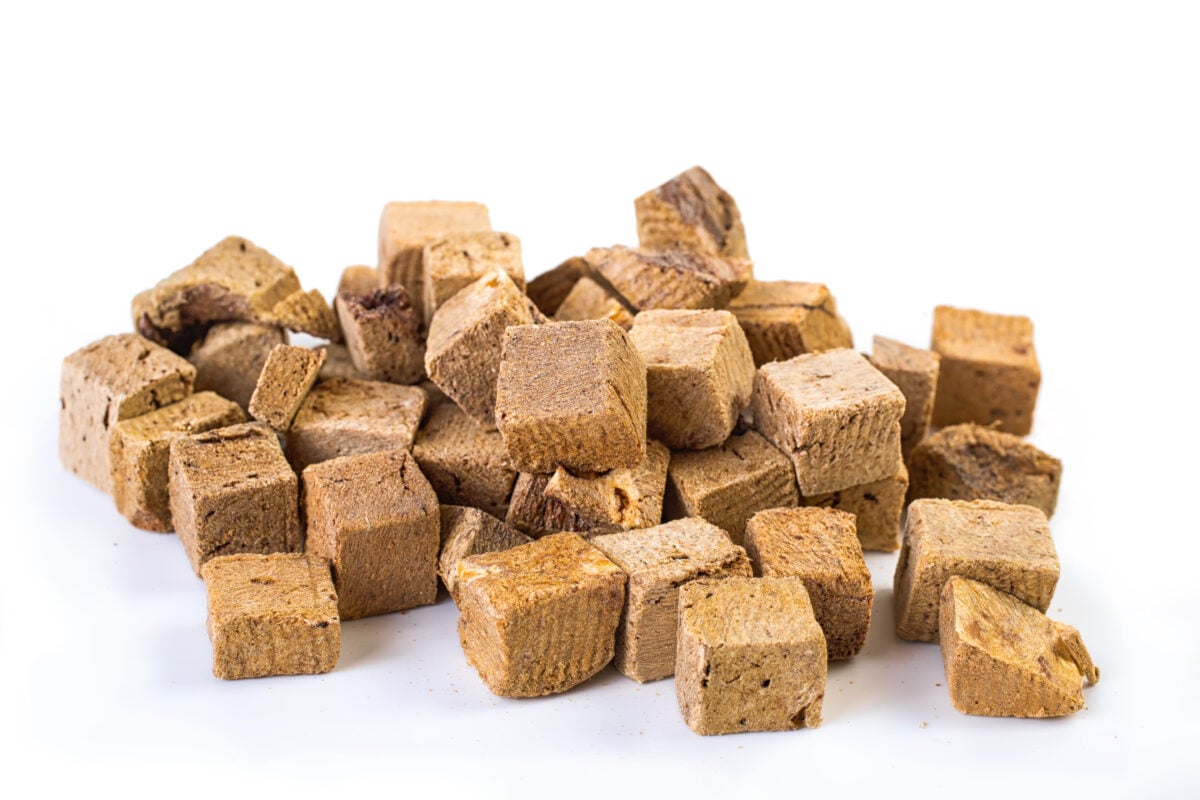
Ingredients (Makes ~3-4 Cups)
- 1 kg (about 2.2 pounds) beef liver (or any liver your dog enjoys)
Instructions
- Rinse the liver under cool water to remove surface residue.
- Bring a large pot of water to a boil. Add the liver and reduce heat.
- Simmer for 30 to 45 minutes, until fully cooked through.
- Allow liver to cool in the pot, then slice into bite-sized pieces.
- Spread pieces on a foil-covered baking sheet in a single layer.
- Freeze in your kitchen or deep freezer for at least 5 to 7 days. Longer is better.
- To test dryness, thaw a piece. If it still feels moist, keep freezing.
- Once completely freeze-dried, store in a sealed container in a cool, dry spot for up to 1 week—or refrigerate to extend shelf life.
Why Liver?
Liver is rich in iron, zinc, and B vitamins, especially B12. It’s a nutrient-dense superfood for dogs when fed in moderation. Just keep portions small, as too much liver can cause vitamin A toxicity over time.
My Personal Experience With Homemade Freeze-Dried Beef Liver Treats
I hate everything about liver, especially its smell and look. The thought of having liver in my refrigerator used to freak me out.
A few years ago, I met a lovely family on Trusted Housesitters, and I regularly look after their two Leonberger mixes. When she showed me the bite-size chunks and how much the dogs adored them, I had a change of heart.
My two dogs go crazy for it! I cook it in large batches and store it in the freezer in bags.
Just before I run out, I defrost another bag, ready for the week ahead. Since giving Bonkers the liver treats, I noticed a massive difference in his coat, and how shiny and thick it became.
As much as I hate liver, my dogs love it and it is super easy to make.
– Emma Braby, Rescue Dog Mom & Writer For Canine Journal
Frozen Banana Treats
A frozen smoothie for your dog—need we say more? These chilly treats are perfect after a walk in the sun or just for spoiling your pup with something creamy, fruity, and naturally sweet.

Ingredients (Makes ~8 Treats)
- 4 cups plain yogurt (unsweetened, no artificial sweeteners)
- 2 tbsp peanut butter (xylitol-free)
- 3 ripe bananas, peeled and mashed
Instructions
- In a bowl or food processor, blend bananas, yogurt, and peanut butter into a smooth purée.
- Pour the mixture into 4-ounce plastic cups, silicone molds, or ice cube trays.
- Freeze until solid—usually a few hours.
- Pop out and serve as a frozen treat.
- Store in the freezer for up to 2 weeks.
Nutrition Facts (Per 1 Treat)
- Calories: 150
- Protein: 8.5 g
- Fat: 3.7 g
- Carbs: 19.5 g
- Key Nutrients: Calcium, Potassium, Iron
Tip: These treats are larger than standard biscuits, so serve them as a once-in-a-while refreshment. You can halve the portion for small dogs or use mini molds to create bite-sized servings.
Recipe from: Dr. Marty
But Will My Dog Get Enough Nutrients?
Homemade dog food can be healthy, but only when it’s balanced. Research shows that most recipes shared online—even those from books and magazines—fall short of key nutrients.
A study by veterinary researchers at UC Davis analyzed over 200 popular homemade dog food recipes. Only 5% met the minimum nutritional standards set by the National Research Council. Most lacked enough calcium, essential fatty acids, and trace minerals like zinc and copper.
Another review published in the “Journal of the American Veterinary Medical Association” found that nutritional imbalances are extremely common, especially in recipes not developed with the help of a board-certified veterinary nutritionist.
A 2015 study found that even well-intentioned homemade diets created by vets often contained calcium-phosphorus imbalances or were low in key micronutrients. Over time, these gaps can impact bone health, immune function, and organ systems.
The Most Common Deficiencies In Homemade Dog Food
- Calcium (often too low or missing entirely)
- Zinc and Copper
- Vitamin D
- Iodine and Selenium (important for thyroid function)
- Omega-3 fatty acids (especially EPA and DHA)
So What’s The Solution?
You don’t have to ditch homemade meals, but you need a plan. Here’s how to make sure your dog gets everything they need:
- Follow vet-reviewed recipes (like the ones above).
- Add a dog-safe vitamin and mineral supplement designed for home-cooked meals.
- Ask your vet or a board-certified veterinary nutritionist to help tailor meals based on your dog’s age, size, breed, and health needs.
Even a great recipe can fall short without the proper supplementation. The goal isn’t just to feed your dog fresh food but to feed them a complete and balanced diet they can thrive on.
What Nutrients Do Dogs Really Need?
Homemade dog food can be healthy, but only when it checks the right nutritional boxes.
According to AAFCO guidelines, adult dog food should include a specific balance of macronutrients to support long-term health.
Here’s what that looks like:
Protein: 18% minimum
Dogs need high-quality animal (or carefully balanced plant-based) protein to maintain strong muscles, immune health, and organ function. Turkey, beef, eggs, and even lentils can all contribute, but not all proteins are equal in bioavailability.
Fat: 5.5% minimum
Fat provides energy and supports brain, skin, and coat health.
Omega-3s from flax, algae, or fish oil are essential for overall health, but too much saturated fat can lead to obesity or pancreatitis. Balance is key.
Carbohydrates
While dogs don’t need carbs to survive, brown rice, oats, sweet potatoes, and certain legumes can improve digestion and energy levels. Stick with whole, unprocessed sources.
Carbohydrates are also an excellent source of phytonutrients to support your pup’s health.
Water
Homemade food typically contains more moisture than kibble, which helps with hydration and digestion. But dogs still need access to fresh water throughout the day.
For a full nutrient breakdown, check out the AAFCO nutritional guidelines for dogs. These standards help ensure your homemade meals meet essential baseline needs.
Supplements For Homemade Dog Food
Even the most carefully planned homemade meals can fall short without support. Most recipes need extra help to meet your dog’s daily requirements for vitamins, minerals, and essential fatty acids.
Multivitamins: Fill In The Gaps
Homemade meals often lack trace nutrients like zinc, copper, iodine, and vitamin D. A daily multivitamin made for dogs helps cover these gaps and supports long-term health.
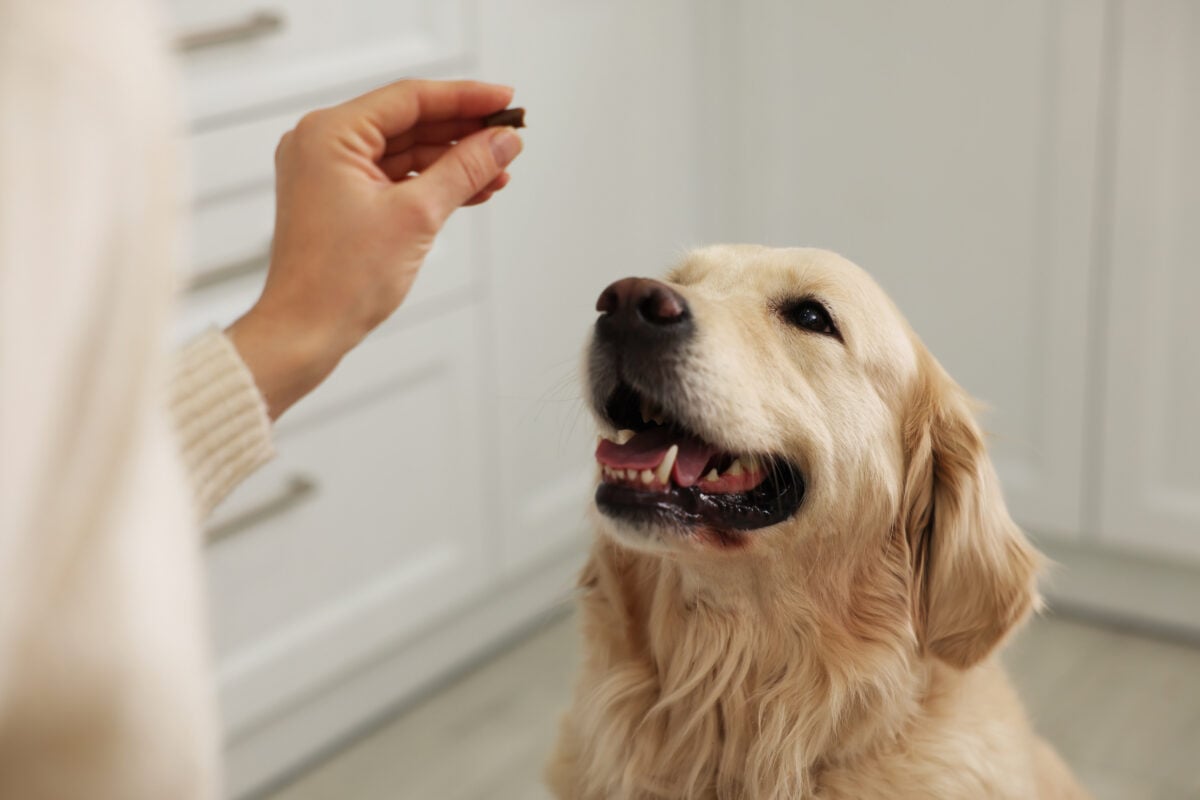
Many multivitamins also include bonus ingredients like omega-3 fatty acids, antioxidants, and compounds that support immune function, joint health, and skin. These extras can be beneficial for senior dogs or those with specific health concerns.
Read our guide to the best dog multivitamins.
Omega-3s: Critical For Skin, Brain & Joint Health
Omega-3 fatty acids support everything from inflammation control to cognitive function. Add omega sources after meals are prepared to protect their benefits.

You can supplement omega-3s with:
- Fish oil (liquid or softgel). See top fish oil options for dogs
- Algae oil or green-lipped mussel. Compare omega sources like kelp, algae, fish oil, and more
- Flaxseed or flax oil (never cook it—add it on top of the food just before serving)
Always follow product-specific dosage guidelines, especially for concentrated oils. Your vet or a board-certified nutritionist can help if your dog has special needs or you’re unsure where to start.
BARF, Cooked, Or Combo? What Type Of Homemade Diet Is Best?
If you’ve researched homemade dog food, you’ve probably encountered the term BARF. It stands for “Biologically Appropriate Raw Food,” and it’s a popular approach among raw feeding advocates.
But is raw actually better than cooked? And what about hybrid diets?
There’s no one-size-fits-all answer, but understanding the pros and cons can help you choose the best fit for your dog.
Raw Food (BARF Diet)
What it is: Uncooked meats, bones, organs, eggs, and raw produce.
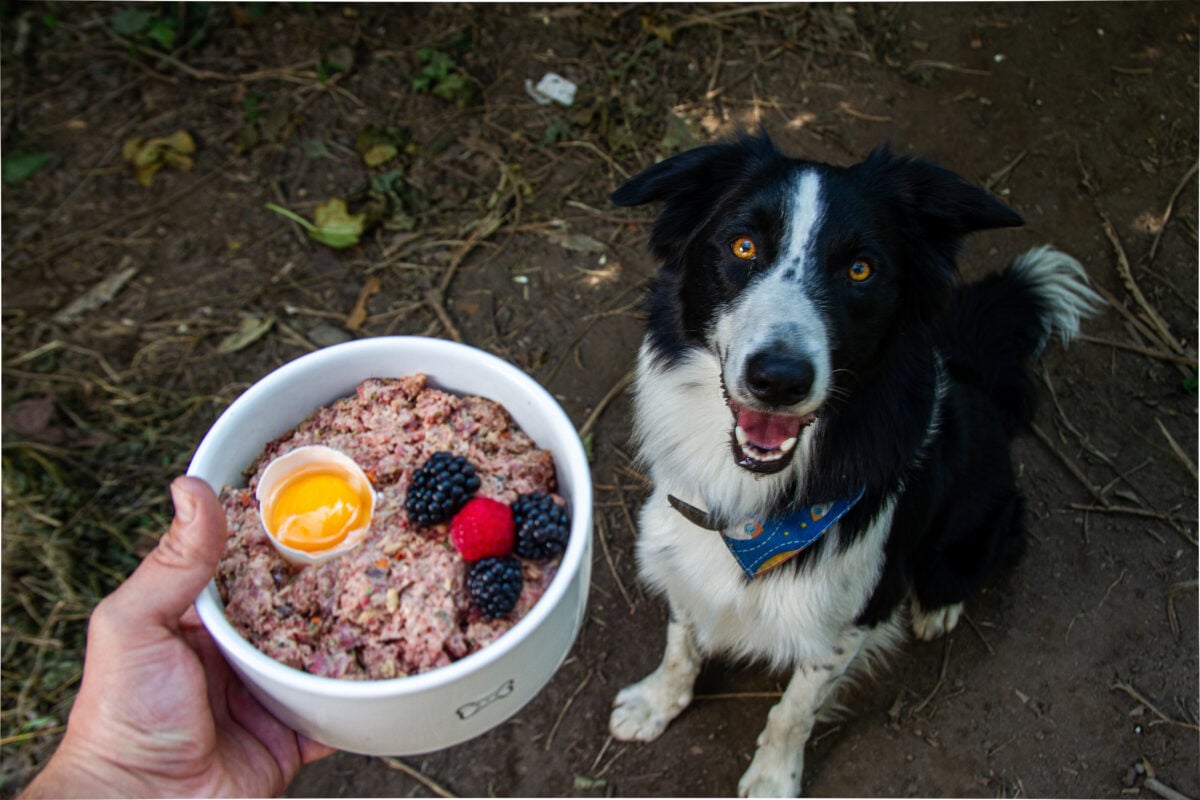
Pros
- Higher nutrient retention
- No processing or artificial additives
- Mimics ancestral diets
Cons
- Risk of pathogens like salmonella and listeria
- Difficult to balance without professional guidance
- Not ideal for dogs with compromised immune systems or households with young kids or elderly adults
Our article on raw dog food diets explains the benefits and risks of raw dog food and includes recipes for home use. You can also consider raw dog food delivery options, too.
Cooked Food
What it is: Homemade meals using cooked meats, grains, and vegetables (like the recipes shared above).
Pros
- Safer and easier to digest
- Easier to portion, store, and freeze
- Still customizable for dietary needs
Cons
- Some nutrients are lost during cooking
Combo Feeding
What it is: A flexible mix of raw and cooked elements, or alternating between them.
Pros
- Offers variety
- May work well for dogs with specific preferences or conditions
Cons
- Planning is more complex
- May still carry raw food risks if not handled carefully
Before starting any homemade diet—especially one that includes raw food—it’s best to consult your veterinarian or a board-certified veterinary nutritionist. Balanced meals are more important than raw versus cooked alone.
Meal Prep Tips: How To Cook Once & Feed For Days
Homemade dog food doesn’t have to be a daily chore. With the proper prep habits and food safety practices, you can make meals in bulk that are fresh, safe, and nutritionally consistent.
1. Stick To The Recipe
Unlike cooking for yourself, homemade dog food recipes must be followed precisely. Substituting or “freestyling” ingredients can lead to nutrient imbalances or unsafe combinations for dogs.
Cook all animal proteins thoroughly to kill bacteria, and always cook grains, beans, and starchy vegetables to aid digestion.
2. Use The Right Storage Containers
Choose airtight containers made of glass or BPA-free plastic. Divide meals into individual portions before refrigerating or freezing.
- Store in the fridge for up to 3–5 days
- Freeze for up to 2–3 months
- Label each container with the recipe and prep date
3. Cook In Batches, But Mix It Up
Prepare a base recipe in bulk, then rotate a topper weekly to keep your dog’s diet interesting. Try alternating proteins (like turkey and beef) or rotating vegetables (like carrots, green beans, or spinach).
4. Portion By Weight, Not Guesswork
Use a kitchen scale to portion meals based on your dog’s calorie needs. This helps avoid over- or underfeeding and ensures consistency across batches.
5. Add Supplements After Heating
If your recipe calls for supplements like multivitamins, fish oil, or flax oil, add them only after the meal has been reheated or thawed. Heat can destroy delicate nutrients—especially omega-3s.
Helpful Resources & Getting Started
If you’re looking for trusted guidance on homemade pet nutrition, two highly regarded books are worth checking out:
- Home-Prepared Dog & Cat Diets: the Healthful Alternative by Donald R. Strombeck, DVM, Ph.D, a long-time expert in veterinary medicine. Many veterinary nutritionists consider this book the gold standard for home-cooked pet diets.
- Dr. Pitcairn’s Complete Guide to Natural Health for Dogs & Cats by Richard H. Pitcairn, DVM, Ph.D and Susan Hubble Pitcairn. A popular resource for holistic pet owners, this guide combines natural care principles with practical recipes and supplement strategies.
- Home Cooking for Your Dog: 75 Holistic Recipes for a Healthier Dog by Christine Filardi. This is more user-friendly cookbook packed with wholesome, dog-safe recipes to try at home.
Before switching your dog’s diet, talk with your veterinarian about your dog’s specific nutritional needs. Every dog is different; what works for one may not be right for another.
And remember: transitioning to homemade food takes time. Slow, gradual changes are the key to avoiding digestive issues and setting your dog up for long-term success.
How To Transition Your Dog To Homemade Food
Even if switching to homemade meals seems like an upgrade, your dog’s digestive system might not immediately agree. Dogs need time to adjust to new ingredients, textures, and nutrient levels.
A slow, step-by-step transition is the best way to avoid upset stomachs, diarrhea, or refusal to eat.
Follow A Gradual 7-Day Transition Plan
Mix the new food with your dog’s current food over a week:
| Day | Old Food | Homemade Food |
|---|---|---|
| 1–2 | 75% | 25% |
| 3–4 | 50% | 50% |
| 5–6 | 25% | 75% |
| 7+ | 0% | 100% |
Storage & Shelf-Life Guide
Homemade dog food doesn’t contain preservatives like kibble, so safe storage matters. These quick tips will help keep your dog’s meals fresh and safe to eat.
Refrigerator Storage
- Store in airtight containers
- Keep refrigerated for up to 3 to 5 days
- Always label meals with the prep date
Freezer Storage
- Freeze any food you won’t use within 5 days
- Use freezer-safe containers, bags, or silicone molds
- Meals stay fresh in the freezer for up to 2 to 3 months
Safe Thawing & Reheating
- Thaw in the refrigerator, not on the counter
- Reheat gently if your dog prefers warm food
- Never use high heat or microwaves with supplements already mixed in
- Discard any thawed food that smells sour or shows mold
Can You Freeze Cooked Rice Or Potatoes?
Yes. Despite common myths, cooked grains, sweet potatoes, and most vegetables freeze well. The texture might soften slightly, but the nutrition stays intact.
Frequently Asked Questions
We know some of our readers still have questions about homemade food for dogs and healthy dog food recies. If you don’t see your question below, ask us in the comments, and we’ll find the answer for you.
Is Grain-Free Dog Food Safe For Dogs?
The FDA has not found a significant link between grain-free dog food and heart health. However, it’s wise to talk with your vet before switching your dog’s diet if you have any concerns about how it might affect your pup.
What Foods Should Your Dog Never Eat?
As a dog owner, you’ve likely come across this essential list before, but it’s always good to have it on hand as a reminder, especially if you’re cooking dog food from scratch. The principal toxic foods include:
- Chocolate
- Onions and garlic
- Avocados
- Grapes and raisins
- Macadamia nuts
- Raw bread dough
- Alcohol
For a more extensive list, check out this article on foods not to feed dogs.
Did you know that most pet insurance policies cover accidental injury and poisoning? Find out what else is commonly included in our pet insurance comparison.
Want Homemade Without The Prep?
Not every pet parent has time for weekly batch cooking. The Farmer’s Dog delivers freshly made meals tailored to your dog’s needs, using real food that meets AAFCO standards. It’s one of the few options that gives you the quality of homemade without the hassle.
Have you made any of these fun and healthy DIY dog food recipes? Perhaps you have another alternative to consuming traditional canned dog food or kibble? In the comments section below, let us know your questions, experiences with homemade food, and other thoughts.
